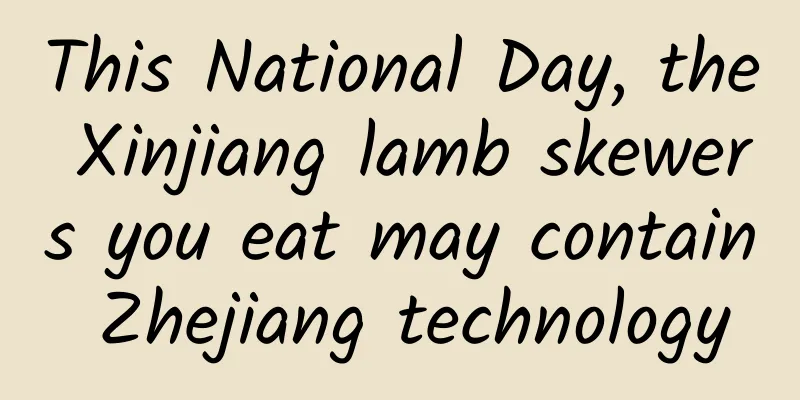Why is the turkey called "Türkiye"? It turns out that it is because of its baldness...

|
Thanksgiving is here. For Americans, Thanksgiving is an important holiday comparable to Christmas, but we foodies are only staring at the fat and greasy roast turkey on the table... However, before we start eating, let's wipe the drool from the corners of our mouths and see what the story of this huge "foreign chicken" is. McDull's ultimate dream is for his mother to roast a turkey for him | Animation "McDull" Why is a turkey called "Türkiye"? The turkey (Meleagris gallopavo) is a large pheasant bird native to America. Its English name is "Turkey" . Yes, you read it right, this "Turkey" is the country "Turkey". Why is the country and the chicken called the same name? This is actually a complete misunderstanding. In the 16th century, Turkish merchants sold guinea fowl (Numida meleagris) native to Africa to Europe. Europeans thought that since the chickens were brought by the Turks, they should be called "Turkey fowl". Later, Spanish colonists brought back turkeys domesticated by locals from Mexico, and gradually spread them to all parts of Europe. Turkey has a unique skeleton among poultry | pixabay Because turkeys and guinea fowls look similar, both are big, stocky, bald chickens, Europeans confused the two and thought turkeys were also guinea fowls , so they also called them "Turkey fowl" or "Indian turkey", which was later simplified to "Turkey". Who can be blamed for this? It's because you two are both bald ... Today, the English name of guinea fowl is "Guineafowl", which was used by Portuguese merchants when they introduced them from West Africa. The literal translation is "Guinea chicken", and turkeys have thus inherited the name "Turkey". The relationship between these two types of chicken is also reflected in their Latin scientific names: the scientific name of guinea fowl is Numida meleagris, and the scientific name of turkey is Meleagris gallopavo. It is not difficult to see that the genus name of turkey comes from the species name of guinea fowl , which intuitively reflects how biologists at that time viewed this large American "pheasant". Guinea fowl are actually much smaller than turkeys, but who says you're both bald? | pixabay The species name of the turkey, gallopavo, is also very interesting. As we all know, the French call themselves "Gallic roosters". In Latin, "gallo" means "rooster"; "pavo" means "peacock" , which is also the name of the genus peacock. The scientific name of the green peacock is Pavo muticus. So the scientific name of the turkey means: "peacock-like guinea fowl", which refers to the fact that male turkeys spread their tails like peacocks when showing off and courting. It's not guinea fowl, nor is it turkey. Many sources say this when introducing turkeys: "Turkey, also known as spit-strip chicken ." "Strip" refers to the silk ribbons used by ancient people to hang jade pendants or seals. As the name suggests, spit-strip chicken means "chicken that can spit out silk ribbons." Could this rather ancient name be the ancient name of turkey? After searching for "spit-strip chicken", I found that this name appears in many ancient Chinese books. For example, in the Tang Dynasty’s Youyang Zazu: There is a bird in the southern mountain of Yufu County... Sometimes it spits out something several inches long, bright red in color, and shaped like a ribbon, so it is called the Ribbon-Spitting Bird. Ming Dynasty Compendium of Materia Medica: The spit-ribbon chicken… has a crop on its neck, which contains a meat ribbon that is usually not visible. In spring and summer, when it is sunny, it swings it towards the sun. First, two green horns about two inches long appear on the top of its head, and then it slowly stretches out the ribbon under its chin. It is nearly a foot long and wide, red and green, and bright in color. After a while, it disappears completely… As mentioned above, turkeys are native to America and were introduced to Europe in the 16th century. The 16th century was around the Ming Dynasty in China. How did the Chinese at that time know about turkeys? Even if there were turkeys in China, where did the earlier records come from? Moreover, the Compendium of Materia Medica clearly states: "Originated from the mountains of Baxia, Fujian and Guang", which clearly means that the turkey is a bird native to China . This bird drawn by American zoologist Daniel Giraud Elliot is the ancient Chinese version of the "Tushou Chicken". Who is it? | Wikimedia Commons As we continued to search, we found more detailed records. During the reign of Emperor Kangxi of the Qing Dynasty, Jiang Xiting, a court painter, painted a book called "Bird Album". He drew birds in a very realistic way, referring to Western painting techniques. The book gave a very detailed description of the "Tucai Chicken": Black eyes with yellow halo, green cheeks, green beak, green beak root, black hair from front to back of cheek, red top. Neck, back, shoulders ochre black and earthy yellow halo, each hair tip has round bluish-white dots like beads. Ochre belly, bluish-white spots, wings and tail ochre black and earthy yellow halo. Feet like chicken, light beige, with hanging spurs. This description has nothing to do with the appearance of a turkey, and the "turkey" in the painting bears no resemblance to a turkey; it is actually a tragopan temminckii. The descriptions of "Tushou Chicken" in the above ancient books clearly point to two types of tragopans native to China - the red-bellied tragopan and the yellow-bellied tragopan (T. caboti). The yellow-bellied tragopan is distributed in parts of southeastern and southern China, while the red-bellied tragopan is distributed in a large area of southwest China. The male birds of these two tragopans have special fleshy wattles under their throats and behind their eyes, which are called "meat skirts" and "meat horns" respectively. The fleshy skirts and horns are usually shrunk and almost invisible, but they will swell and expand during estrus and courtship, especially the fleshy skirt under the throat, which is red and blue after unfolding , and is extremely bright. It looks like a piece of colorful silk spit out from the mouth, so it is named "Tushou Chicken". The red-bellied tragopan is the authentic "turkey" | DickDaniels / Wikimedia Commons The red-bellied tragopan unfolds its "ribbon" | Beautiful China The turkey also has layers of wattles under its throat. The male turkey has a very long wattle hanging down above its beak. Moreover, its wattle will change from blue and white to red in a very short time depending on its mood. (Calendar Lady: There is a saying in crosstalk that "foreign chickens change color", which refers to the wattle of the turkey that can change color). It is somewhat similar to the characteristics of the Tujia chicken recorded by the ancients as "the wattle under the chin is nearly a foot long and wide, red and green, and bright in color". So some people made a far-fetched assumption and gave this imported species the name "Tujia chicken". "Who are you calling bald? I'm angry! Humph!" Turkeys' wattles turn red when they are excited | pixabay The two true "turkeys", the yellow-bellied tragopan and the red-bellied tragopan, have been listed as the first and second class national key protected wild animals respectively. They still live freely in the mountains and forests, and have escaped the fate of becoming "prisoners" of humans. How to have children without men? Parthenogenesis, also known as parthenogenesis , is a reproductive method in which the eggs of female animals can develop into normal new individuals without fertilization. This reproductive method is widely found in insects, fish, and reptiles. Some species even have no males at all and rely solely on females to continue the population. But most animals, including all birds and mammals, still honestly carry out sexual reproduction. Sexual reproduction is equivalent to the recombination of the genes of the parents in the offspring, so that the offspring have higher genetic diversity and are more prone to mutation. In the face of a constantly changing environment, only by maintaining the diversity of species genes can they have the possibility of adapting to environmental changes. The New Mexico whiptail lizard (Aspidoscelis neomexicanus) is all female, with no males, and reproduces through parthenogenesis | Greg Schechter / Wikimedia Commons In some extreme cases, sexual reproduction can also become an obstacle to the continuation of a population . For example, if a female animal comes to a new habitat alone and there are no males of the same or closely related species, how can it leave offspring? If it were an ordinary bird or animal, the bloodline of this branch would end from then on. However, if it were a female turkey, the script might have to be rewritten. As early as the early 19th century, there were reports of parthenogenesis in domestic chickens. Later, people discovered that turkeys have the same ability, and are even more powerful than domestic chickens. In 1953, research statistics from the Beltsville Agricultural Research Center in Maryland, USA, showed that 14% of unfertilized eggs laid by Beltsville Small White turkeys (a small breed of domestic turkeys) could develop and hatch into turkey chicks . These turkey chicks were all male and were able to mature and reproduce normally. Later, people carried out further selection and breeding of turkey breeds with parthenogenesis characteristics, and the hatchability of their unfertilized eggs was increased to 40% . Turkey after turkey, endlessly (big mistake)... | Animation "McDull" Male offspring produced through parthenogenesis are identical to their mothers in all genes except for sex, and can actually be considered clones of their mothers. Some breeders use this method to purify elite female turkeys by backcrossing their parthenogenetic male offspring with them to maintain their superior traits - this "trait" usually means an oversized breast , after all, this is the main edible part of the turkey! White turkey pectoralis major. This part is too dry and not to the liking of many Chinese people | Public Domain Pictures After hearing the legendary story of turkey, when we look at the roasted turkey on the table, do we have a little respect for it? Now let us enjoy the food given to us by another continent with a grateful heart! Author: Nanchuan Pineapple Cover image source: pixabay This article comes from the Species Calendar, welcome to forward If you need to reprint, please contact [email protected] |
<<: What does it mean to take medicine three times a day? Many people get it wrong!
>>: Flame Encounter! The correct way to find fireball meteorites on the road, will this be possible?
Recommend
Tips for creating a private circle of friends!
In the one month since I started doing private do...
4 types of marketing activities that are most likely to go viral!
There is another type of activity that is driven ...
We've found the reason why rainy winters are colder. All it takes is a little bit of relativity
Author: New Media Center of Institute of Physics,...
How to quickly build an advertising landing page?
As the core of conversion, the importance of land...
Baked purple potatoes explode! Do you know the "explosive temper" of these electrical appliances?
Audit expert: Luo Huiqian Associate Researcher, I...
Analysis of B Station’s advertising promotion!
Nowadays, content marketing has become an indispe...
Yuan Jianbo, founder of Shengjian Games: How to make VR games?
In 2016, VR swept the domestic technology market ...
3 logics and 6 practical skills of Douyin BGM!
You may not have used TikTok, and you may not kno...
How to use scientific “user segmentation” to break through the bottleneck of user growth?
When talking about the user growth of Internet pr...
How to effectively reduce user churn?
Like running a marriage. We gradually get used to...
Hejun "Zeng Qiao's Capital Observation" Season 5
Supported by a 30-person research team, each sess...
Tencent Advertising Platform Advertiser Violation Penalty Regulations!
I. Definition of advertiser violation Advertiser ...
A guide to Tik Tok account positioning, content and monetization!
I often see other people’s short video accounts w...
Do you have "bedtime procrastination"? I heard that women are more serious than men!
“Let me check Weibo again, in case there is any e...
Why did Apple launch the gold version of the Apple Watch at a sky-high price?
Benedict Evans, an analyst at venture capital fir...









